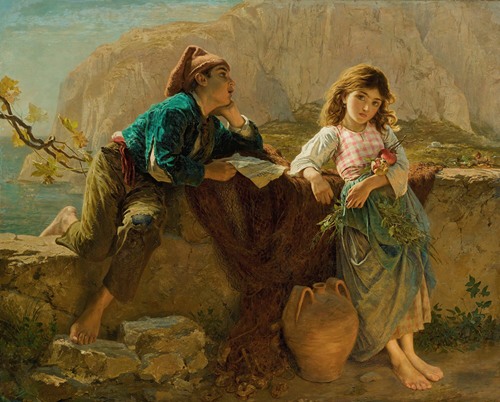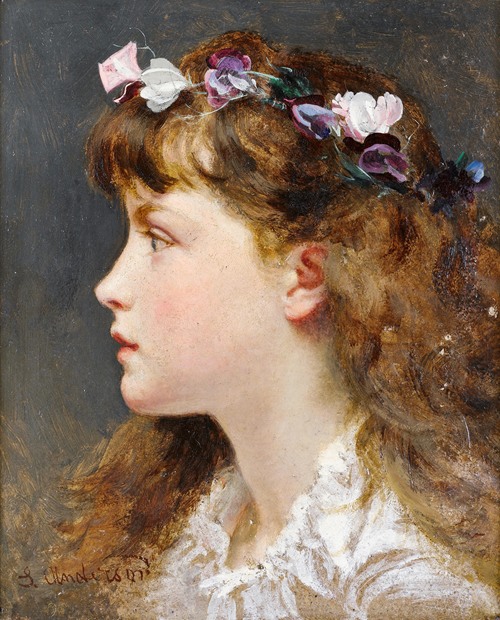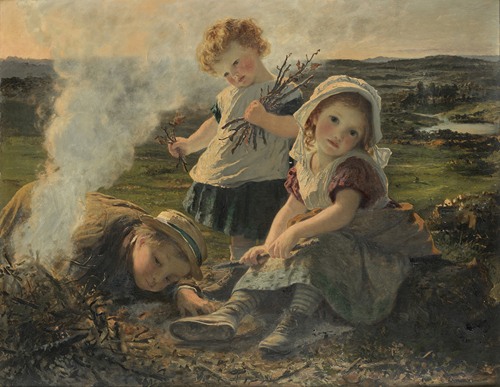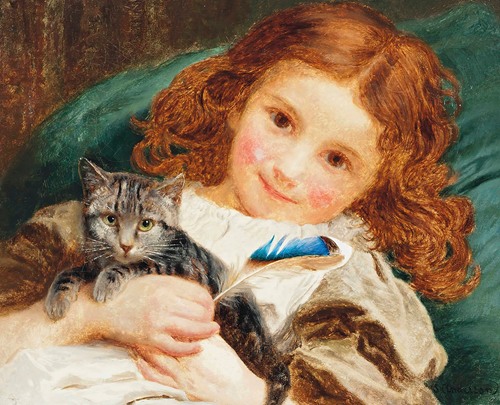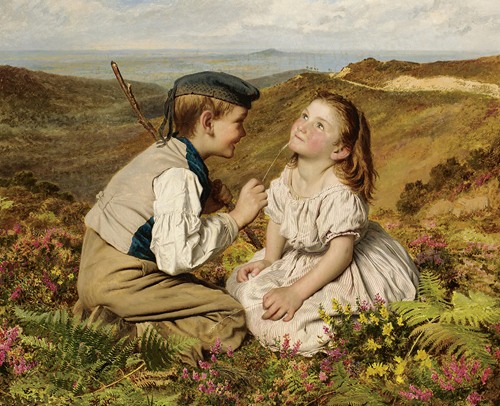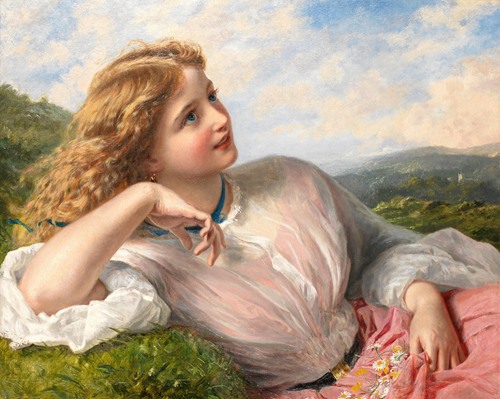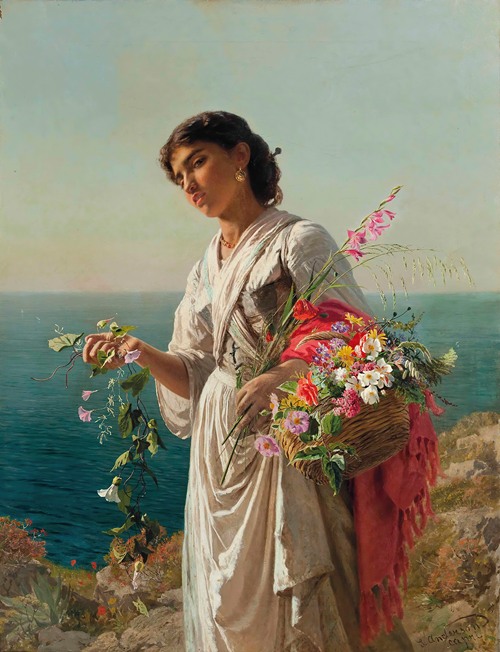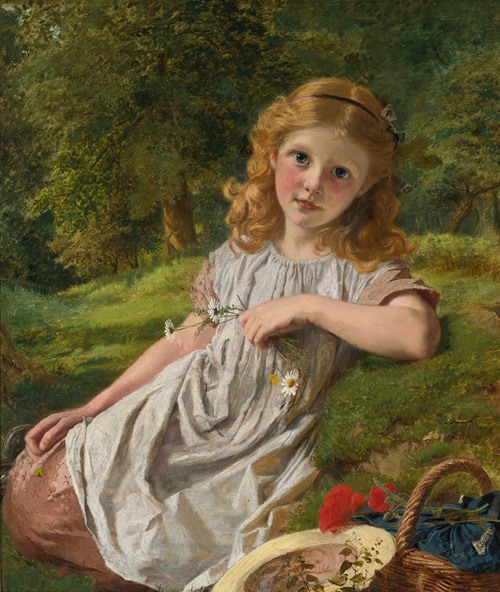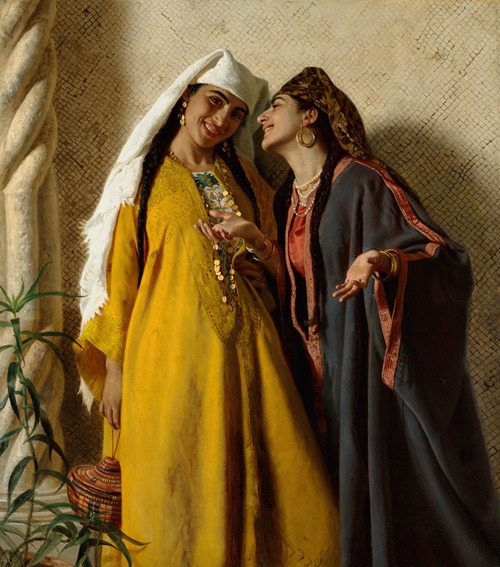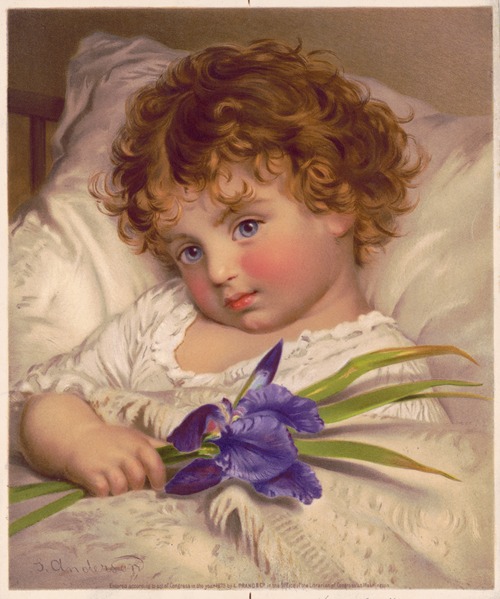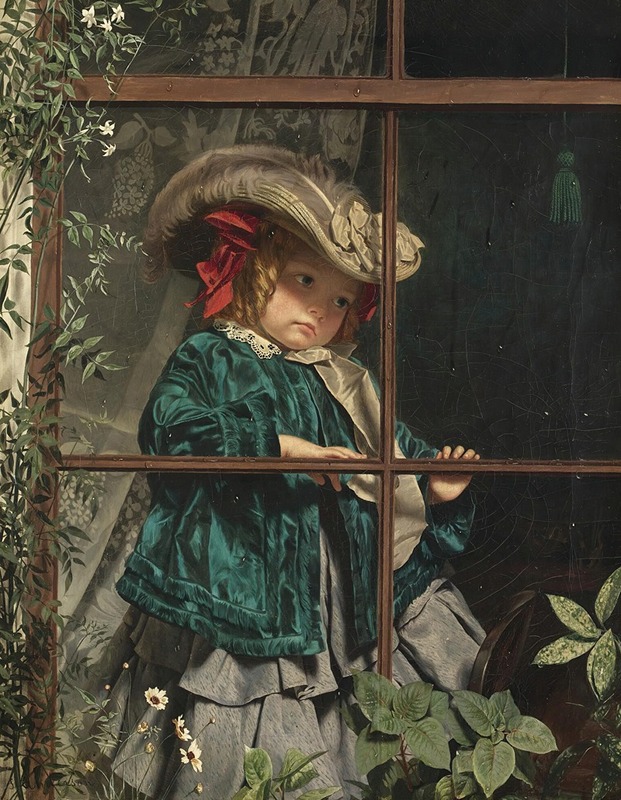
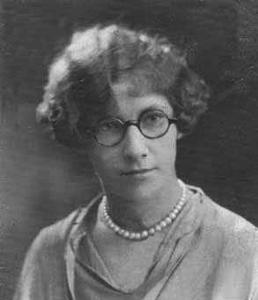
Sophie Gengembre Anderson was a French-born British artist who specialised in genre painting of children and women, typically in rural settings. She began her career as a lithographer and painter of portraits, collaborating with Walter Anderson on portraits of American Episcopal bishops. Her work, Elaine, was the first public collection purchase of a woman artist. Her painting No Walk Today was purchased for more than £1 million.
Sophie was born in Paris, the daughter of Charles Antoine Colomb Gengembre, a French architect and artist, and his English wife, Marianne Farey (1799–1883), a daughter of John Farey Sr. (1766–1826) and his wife Sophia Hubert (1770–1830). They married at St Pancras Church, London, on 12 April 1818 Her father was born in 1790 and began working as an architect at age 19. He worked primarily in municipal commissions, like the Mint of the City of Cassel, which he designed and built when he was 19. He was injured during the Revolution of 1830 on the same day that his son Philip was born. The family then went to London, where Gengembre worked as an architect for Charles Fourier. He returned to France and continued his work as an architect, designing communal schools around France.
The family moved to America and adopted the surname Hubert, because of difficulties in people pronouncing their french surname.
After moving to Cincinnati, Ohio, he settled in Manchester, Pennsylvania, and by 1863 had designed pro bono the Allegheny City Hall. He stopped speaking English in protest after he was offered a share of the graft of over-inflated construction costs.
They lived in Paris during the early years of Sophie's life, where her father was acquainted with artists, intellectuals, and actors, like François Joseph Talma. Circumstances required that the family leave Paris and live in a "remote area in France" from 1829 to 1843. At seventeen she developed an interest in art when a travelling portrait painter visited her town.
She had two brothers, Philip and Henry P. Gengembre. Her brother Philip changed his name to Philip Hubert, using his grandmother's maiden name, and was a successful architect in New York City. She was largely self-taught in art, but briefly studied portrait painting with Charles de Steuben in about 1843, when she lived with family friends in Paris. Soon after she began her studies, he left for Russia and did not return within the one year allotted for her studies. She did develop relationships with other women artists at the school where she gained a little more instruction.
The family left France for the United States to escape the 1848 revolution. The family first settled in Cincinnati, Ohio, where she met her future husband, the British genre artist Walter Anderson. Her brother Henry P. Gengembre (b. 1825) was also an artist, active in Cincinnati in the early 1850s.
Her portrait, figure and Brittany landscape paintings were exhibited in October 1849 at the Western Art Union Gallery.
In 1851 four or more of her illustrations were included in the Historical Collections of the Great West by Henry Howe. She collaborated with Walter Anderson, her future husband, on portraits of Protestant Episcopal bishops and created other portraits in her business.
She then lived in Manchester, Pennsylvania, with her parents, where she is believed to have married Walter Anderson. She worked there for the chromolithographers Louis Prang & Company.
In 1854 the Andersons moved to London, where Sophie exhibited a still life of fruit, vegetables, game, and fish entitled An American Market Basket at the Society of British Artists by 1855. It was considered an "admirable composition" made with "surprising truth". Her genre pieces were also exhibited at the Royal Academy. They returned to Pennsylvania in 1858 for a long visit with her family, during which time she exhibited at the Pittsburgh Artist's Association in 1859 and 1860. The latter year she and her husband had work shown at the National Academy of Design. She then settled in London again around 1863.
Anderson's work was widely exhibited at venues including the Royal Academy, the Royal Society of British Artists (RBA), and the British Institution. Her work, Elaine, was one of the first public collection purchases of a living woman artist. The Marquis de Murrieta contributed the painting A Fairy Messenger to a mixed charity exhibition in 1871.
To manage her health issue, the couple moved to the Isle of Capri in 1871, where they lived, painted, and entertained society in a house with a large garden called Villa Castello. Capri was an artist colony at that time, its residents included Frederic Leighton, Walter McLaren, John Singer Sargent, Edouard Alexandre Sain, and Jean Benner. She exhibited at the Grosvenor Gallery between 1878 and 1887. Anderson made Italian genre and Neoclassical paintings, including paintings of peasant women and children. At a time when it was difficult for women to have a successful artistic career, these paintings, generally made by men, allowed for her to have a successful career.
The couple moved to England in 1894 and lived and painted in Wood Lane Cottage in Falmouth, Cornwall. She continued to exhibit her work in London. On 11 January 1903 her husband Walter died and two months later, on 10 March 1903, she died at home in Falmouth. She was buried at Swanvale cemetery in Falmouth in the same grave as her husband.
